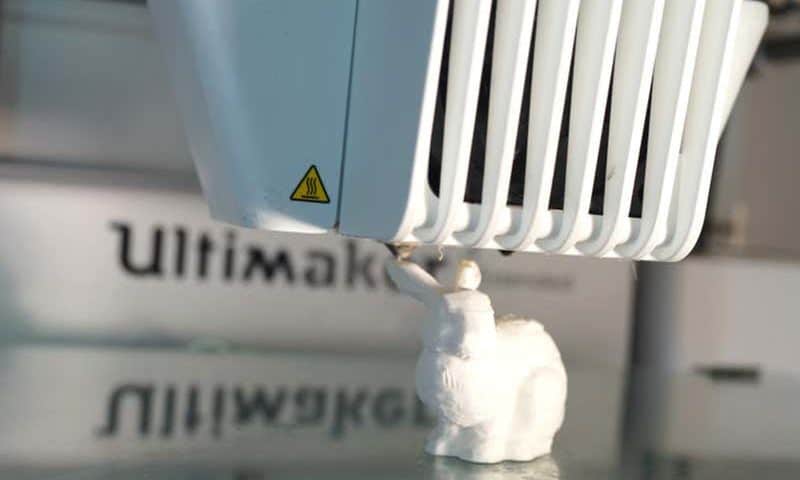A 3D-printed polyester rabbit has been embedded with DNA that contains a blueprint for printing additional bunnies. Using the information, researchers have replicated the rabbit several times, highlighting the potential for using DNA to store information in everyday objects.
The plastic bunny was developed by the teams of Robert Grass at the Swiss Federal Institute of Technology in Zurich and Yaniv Erlich at Erlich Lab, a DNA storage company in Israel. “One day he [Erlich] wrote an email – ‘Hey, what if we put real information into your object? That would be really cool,’” says Grass.
The four DNA bases –adenine (A), cytosine (C), thymine (T) and guanine (G) – were used to encode the 45 kilobyte instructions for making the bunny and the corresponding DNA sequence was then synthesised. The DNA was first packaged into microscopic spheres of glass to protect it, before being incorporated into the plastic that formed the bunny.
The teams put their 3D-printed bunny to the test by cutting off a piece of plastic from its ear and isolating the embedded DNA. They used a DNA sequencing machine to read the specific sequence of DNA bases, which was then translated into instructions for the 3D printer.
The 3D printer then produced a second, identical, plastic bunny, complete with DNA-containing glass spheres. The teams then used this second bunny to produce a third. They repeated this replication process four times in total. Replication was still possible after one of the bunnies had been stored for nine months.
“We were extremely happy once we could read our first bunnies,” says Grass. He says his next goal is to make DNA storage an everyday technology.
“The creativity of this embryonic field just keeps getting better,” says George Church at Harvard University. Church says the creation of a functional object with DNA memory is a “big step”. DNA storage could have future applications in manufacturing, where instructions could be stored locally in objects.
“You can imagine a system where everything is tagged with small bits of useful information,” says Sriram Kosuri at the University of California, Los Angeles. “What’s cool about this work is that they show that is doable today, and it seems pretty reliable,” says Kosuri.
“Any potential application is still likely years away, but this study is certain to inspire creative uses we can’t predict right now,” says Calin Plesa at the University of Oregon. It is interesting to think of a possible distant future where archaeologists use the DNA embedded in human-made artefacts to learn more about our civilisation, says Plesa.

